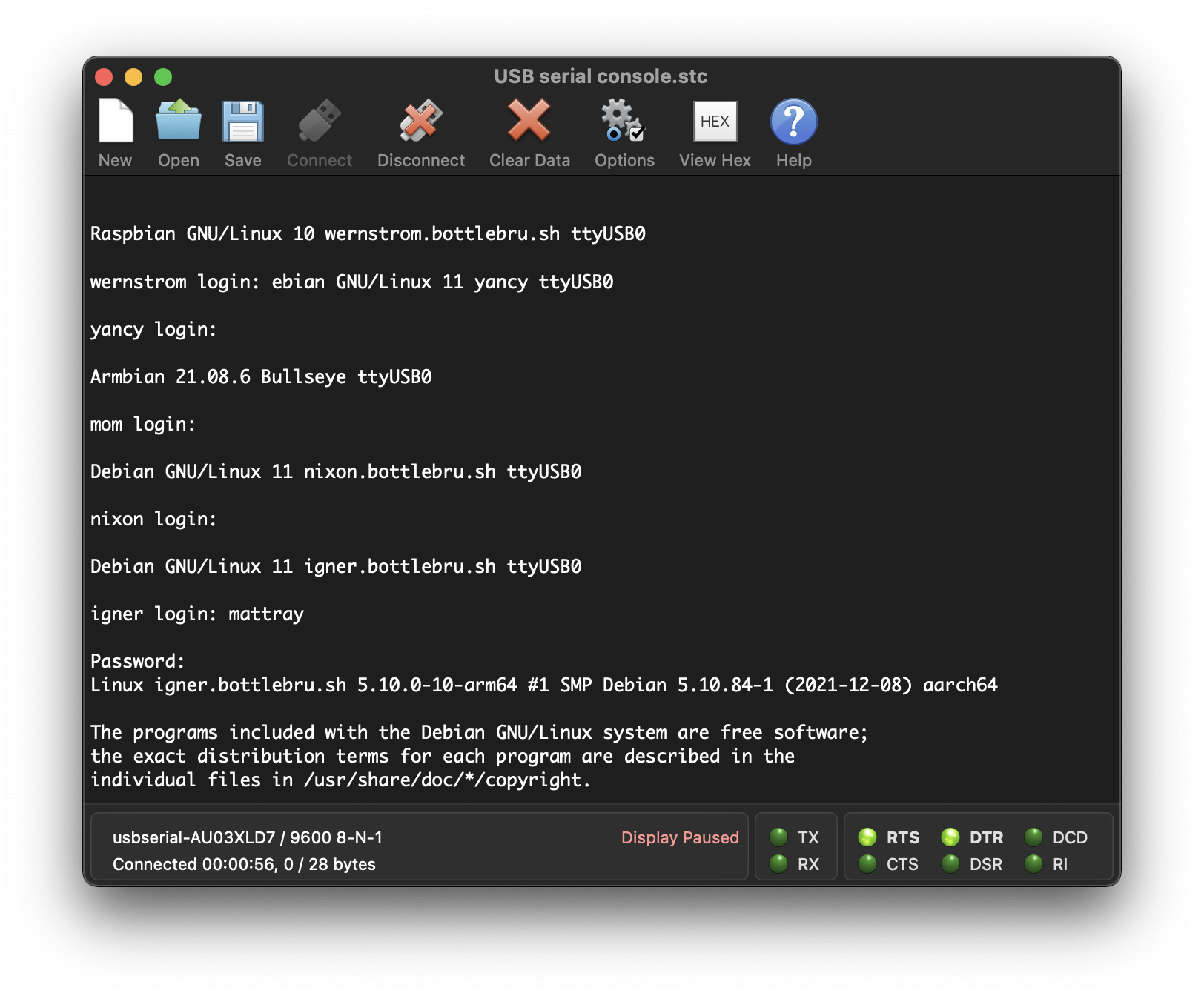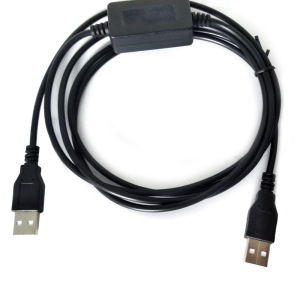Serial consoles have been used to communicate with headless networking and datacenter gear for decades. It works without requiring a screen, keyboard or networking which makes it helpful for debugging embedded devices and clusters of broken laptops and headless Arm boxes (which is my home lab). Most devices stopped shipping with serial ports years ago and USB to RS-232 serial adapters became common, but I picked up a USB to USB crossover serial adapter eliminating the need for separate cables. I purchased mine from Alibaba.com, which was cheaper than the name-brand alternatives (about $25 with shipping to Australia).
Configuring ttyUSB0
On Linux the serial console is usually available as ttyS0, and if it’s enabled you can connect to it with tools like screen or minicom. Physical and virtual consoles are connected to serial ports and the terminal with the application getty (“get tty”), presenting the user with a login prompt. A USB serial console would be available as ttyUSB0, so you need to connect the Linux service getty to ttyUSB0. For most recent Linux versions, this is managed by systemd so enabling and starting the service is as simple as:
systemctl enable getty@ttyUSB0.service
systemctl start getty@ttyUSB0.service
This creates a symlink from /etc/systemd/system/getty.target.wants/getty@ttyUSB0.service to /lib/systemd/system/getty@.service and starts listening on the USB serial console. I ran this on Raspbian 10, Armbian 11, and Debian 11 x86 and Arm systems and it worked across the board. I added it to my Chef recipe to ensure it stayed enabled across my current and any future machines.
Accessing the USB Serial Console with CoolTerm
I’m currently using macOS, so I initially tried out Serial which was very impressive but seemed like overkill for my limited needs. Roger Meier’s CoolTerm serial port terminal application was simple and worked like a charm.
To connect with CoolTerm follow these steps:
- Start the CoolTerm application
- Connect the USB serial crossover cable. I’m using a USB-C to USB-A adapter with my M1 Macbook Air, it works just fine.
- Go to Options and select the Port similar to
usbserial-AU03XLD7. If it is not listed, unplug the USB cable, replug it and click Re-Scan Serial Ports without the cable plugged into the remote machine yet. - The Baudrate should probably be
9600, this appears to be the default. - Data Bits should be
8, ParityNoneand Stop Bits1, these are all defaults. - Under Terminal you may want to set Filter ASCII Escape Sequences if you use any special characters in your
PS1or see odd characters in your terminal. - I didn’t change any of the other defaults, it worked without having to mess with these.
- Exit the Options and select Connect. At this point you should see a blank terminal and a timer with the number of bytes transmitted.
- Plug the other end of the USB cable into your
ttyUSB0enabled device and a terminal should come right up. It works exactly like a virtual console or SSH session.
Unplugging it and plugging it into another machine behaves exactly like detaching a monitor. A USB console left open will stay open and switching to other machines will bring up their prompt accordingly. Have fun!

